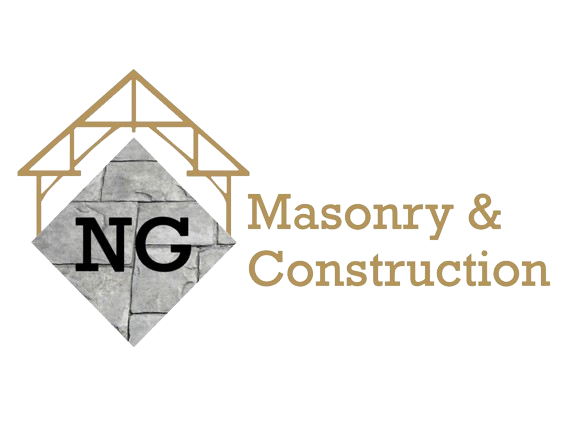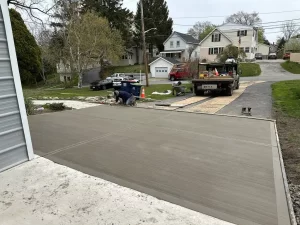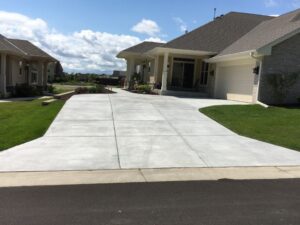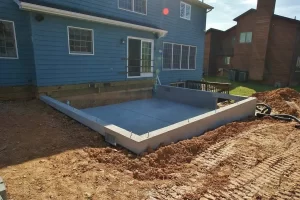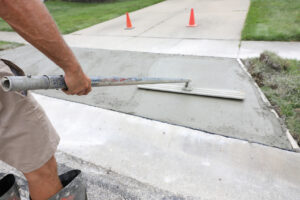Designing and installing a concrete patio can transform your backyard into a beautiful and functional outdoor living space. With careful planning and attention to detail, you can create a concrete patio that is not only durable and low-maintenance but also stylish and inviting. In this guide, we will walk you through the essential steps to design and install the perfect concrete patio, ensuring you achieve the best results for your project.
Whether you're a DIY enthusiast or planning to hire a professional, understanding the process and key considerations will help you make informed decisions. From choosing the right materials and design to the actual installation and finishing touches, this comprehensive guide covers everything you need to know about creating a stunning concrete patio.
Choosing the Right Design for Your Concrete Patio
The design of your concrete patio plays a crucial role in how well it integrates with your outdoor space and meets your functional needs. Concrete patios can be customized in various shapes, sizes, and styles, making it essential to choose a design that complements your backyard's aesthetics.
Start by considering the overall look you want to achieve. Do you prefer a modern, minimalist design with clean lines, or a more traditional style with decorative elements? Think about how you plan to use the patio – will it be a dining area, a lounge space, or a combination of both? Your design should reflect these considerations to ensure the patio is both practical and visually appealing.
Preparing the Site and Laying the Foundation
Proper site preparation is key to the longevity and stability of your concrete patio. Begin by marking the area where the patio will be installed. Use stakes and string to outline the perimeter and ensure it's level and square.
Next, excavate the area to a depth of about 6-8 inches, removing grass, roots, and other debris. A well-prepared base is essential for preventing cracking and shifting. After excavation, lay a layer of gravel, approximately 4 inches deep, and compact it thoroughly. This gravel base provides drainage and helps distribute the load evenly, creating a solid foundation for your concrete slab.
Here is a step-by-step checklist for preparing the site and laying the foundation:
- Mark the Area: Use stakes and string to outline the perimeter of your patio and ensure it's level and square.
- Excavate the Site: Dig out the area to a depth of 6-8 inches, removing grass, roots, and debris to create a clean slate.
- Lay a Gravel Base: Spread a 4-inch layer of gravel and compact it to provide proper drainage and a stable foundation.
- Install Form Boards: Set up wooden form boards around the perimeter, securing them with metal stakes to keep the concrete in place.
- Check Levels: Ensure the form boards are level and the corners are square to maintain a uniform shape for your patio.
Building the Concrete Forms
Building sturdy forms is crucial for shaping the concrete slab and ensuring clean edges. Use form boards, typically made of wood, to construct the perimeter of the patio. Secure the form boards with metal stakes, ensuring they are flush and level.
The forms should be strong enough to contain the wet concrete and maintain their shape during the pouring process. To prevent the concrete from sticking to the forms, apply a commercial release agent to the inside surfaces. Additionally, consider adding control joints to the forms to prevent cracking as the concrete cures.
Pouring and Finishing the Concrete
Pouring concrete is a critical step that requires careful attention to detail. Begin by mixing the ready-mix concrete according to the manufacturer's instructions. Pour the concrete into the forms, starting from one end and working your way across the entire patio.
Use a bull float to smooth the surface of the wet concrete, ensuring an even finish. After the initial smoothing, use a magnesium float to further refine the surface. This step helps to eliminate air pockets and create a dense, durable surface. As the concrete begins to set, use a steel trowel for the final finishing touches, achieving a smooth and polished look.
Ensuring Proper Curing and Sealing
Curing is a critical process that ensures the strength and durability of your concrete patio. After finishing the surface, cover the patio with a curing compound or plastic sheeting to retain moisture. This helps the concrete cure slowly and evenly, preventing cracks and enhancing its overall durability.
Once the concrete has cured, typically after about 28 days, apply a concrete sealer to protect the surface from stains, water damage, and harsh weather conditions. Sealing your patio will enhance its longevity and keep it looking beautiful for years to come.
Incorporating Functional and Aesthetic Elements
To create a patio that is both functional and visually appealing, consider incorporating various elements that enhance its usability and aesthetic appeal. Adding features such as built-in seating, fire pits, or water features can transform your patio into an inviting outdoor living space.
Functional elements like outdoor furniture, planters, and lighting can also enhance the overall experience. Choose materials and designs that complement the style of your patio and create a cohesive look. A well-designed patio should seamlessly blend with your backyard, providing a comfortable and attractive space for relaxation and entertainment.
Adding Color and Texture to Your Concrete Patio
Enhancing the appearance of your concrete patio can be achieved through the use of color and texture. Integral color, acid stain, or water-based stains can be added to the concrete mix or applied to the surface to achieve a wide range of colors and finishes.
Consider incorporating decorative elements such as stamped patterns or textured finishes to mimic the look of natural materials like stone or wood. These additions can create a unique and visually appealing patio that stands out as a focal point in your backyard.
Maintaining Your Concrete Patio
Proper maintenance is essential to keep your concrete patio in top condition. Regular cleaning and sealing will protect the surface from stains and weather damage. Sweep the patio regularly to remove debris and prevent dirt buildup.
For deeper cleaning, use a mild detergent and water to scrub the surface. Rinse thoroughly with a garden hose to remove any soap residue. Reapply sealer every few years to maintain the protective barrier and keep your patio looking fresh and new. With proper care, your concrete patio can provide years of enjoyment and enhance the value of your home.
Considering Concrete Patio Costs
When planning your concrete patio project, it's important to consider the costs involved. The cost of a concrete patio can vary depending on factors such as size, design complexity, and the materials used. On average, expect to pay between $6 to $15 per square foot for a basic installation.
For more elaborate designs with decorative elements, the cost can increase significantly. Budgeting for additional features like built-in seating, fire pits, or custom finishes will also impact the overall cost. It's essential to get multiple quotes from contractors to ensure you receive a fair price and quality workmanship for your project.
Enhancing Your Backyard with a Concrete Patio
A well-designed concrete patio can significantly enhance the functionality and aesthetics of your backyard. It provides a versatile space for outdoor living, dining, and entertaining. By carefully planning and executing the design and installation, you can create a stunning patio that complements your home's style and meets your outdoor needs.
Consider incorporating landscaping elements such as garden beds, vertical gardens, and pathways to further enhance the appeal of your patio. The integration of natural elements and greenery can create a seamless transition between your patio and the surrounding landscape, creating a harmonious and inviting outdoor space.
DIY vs. Professional Installation
Deciding whether to tackle the installation of your concrete patio as a DIY project or hire a professional like NG Masonry & Construction depends on several factors. DIY installation can be a cost-effective option if you have the necessary skills and tools. However, it requires careful planning, precise execution, and a significant time investment.
Professional installation from NG Masonry & Construction offers the advantage of expertise and experience, ensuring a high-quality finish and adherence to best practices. Contractors have access to specialized equipment and materials, which can result in a more durable and aesthetically pleasing patio. Weigh the pros and cons of each approach to determine the best option for your project.
Your Perfect Concrete Patio Awaits
Designing and installing the perfect concrete patio requires careful consideration of design, materials, and installation techniques. By following the steps outlined in this guide, you can create a beautiful and functional outdoor space that enhances your backyard and provides years of enjoyment.
Whether you choose to take on the project yourself or hire a professional, the key to success lies in thorough planning and attention to detail. With the right approach, your concrete patio will become a cherished addition to your home, offering a versatile and inviting space for outdoor living and entertainment.
